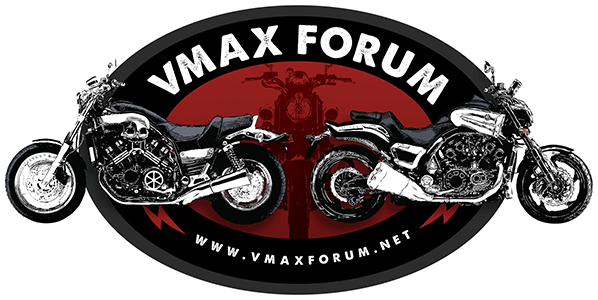This thread is part of a series, you can find the list of all other threads related to my overall restoration here: ColtMax's 1997 Restoration thread
DISASSEMBLY
Time to open up and clean those Carbs! I am always amazed how easy and quick it is to pull the carbs out on the Vmax. One could expect to be much more complex, but it all boils down to:
- Drain the fuel from each carb using the drain screw and tube
- Remove Air box
- Disconnect throttle cables from the cable connector box
- Loosen the clamps securing the carb boots
- Pull up, slide to the left and Voilà!
I suggest you take plenty of pictures of the carbs all assemble, this might be quite useful when re-assembling.
Get yourself some magnetic trays, cooking pans, small pill containers or anything that might help identifying, keeping and storing. You may find things needing to be replaced that will make this a much longer project than anticipated.





Now its time to separate this monster of assembly. Using a sharpie and painters tape, ID the carbs with their corresponding cylinder number. Remember the "N" pattern with starting point being Cyl.#1.
I did not take enough picture of this part, I think I might regret it, but one thing to be careful about is to not drop that spring circled in red. And be careful when disconnecting the choke connecting rod between Cyl. 2 and 4.



Once the four carbs are apart I strongly recommend you disassemble and rebuild one at the time. This will give you the opportunity to refer to the ones still assembled in case of memory failure
I have used the Clymer shop manual and the Yamaha factory service manual as my source for info. And this Awesome Forum too of course!
A lot of dirt and gasoline turned into varnish came out while taking them apart. I was surprised to see so much of it. This bike was never stored for period longer than 6 months at the time (winter). Fuel Stabilizer was added to the tank at every last ride of the season, and yet, lots of varnish compound.


DISASSEMBLY
Time to open up and clean those Carbs! I am always amazed how easy and quick it is to pull the carbs out on the Vmax. One could expect to be much more complex, but it all boils down to:
- Drain the fuel from each carb using the drain screw and tube
- Remove Air box
- 2 Philips screw holding the carb's bowl vent pipes to each side of the Air Box
- 4 clamps to be loosen
- The crank case breather pipe to be unplugged (you may want to remove the coolant overflow reservoir to gain proper access to this pipe)
- Disconnect fuel line- Disconnect throttle cables from the cable connector box
- Loosen the clamps securing the carb boots
- Pull up, slide to the left and Voilà!
I suggest you take plenty of pictures of the carbs all assemble, this might be quite useful when re-assembling.
Get yourself some magnetic trays, cooking pans, small pill containers or anything that might help identifying, keeping and storing. You may find things needing to be replaced that will make this a much longer project than anticipated.





Now its time to separate this monster of assembly. Using a sharpie and painters tape, ID the carbs with their corresponding cylinder number. Remember the "N" pattern with starting point being Cyl.#1.
I did not take enough picture of this part, I think I might regret it, but one thing to be careful about is to not drop that spring circled in red. And be careful when disconnecting the choke connecting rod between Cyl. 2 and 4.



Once the four carbs are apart I strongly recommend you disassemble and rebuild one at the time. This will give you the opportunity to refer to the ones still assembled in case of memory failure
I have used the Clymer shop manual and the Yamaha factory service manual as my source for info. And this Awesome Forum too of course!
A lot of dirt and gasoline turned into varnish came out while taking them apart. I was surprised to see so much of it. This bike was never stored for period longer than 6 months at the time (winter). Fuel Stabilizer was added to the tank at every last ride of the season, and yet, lots of varnish compound.

















